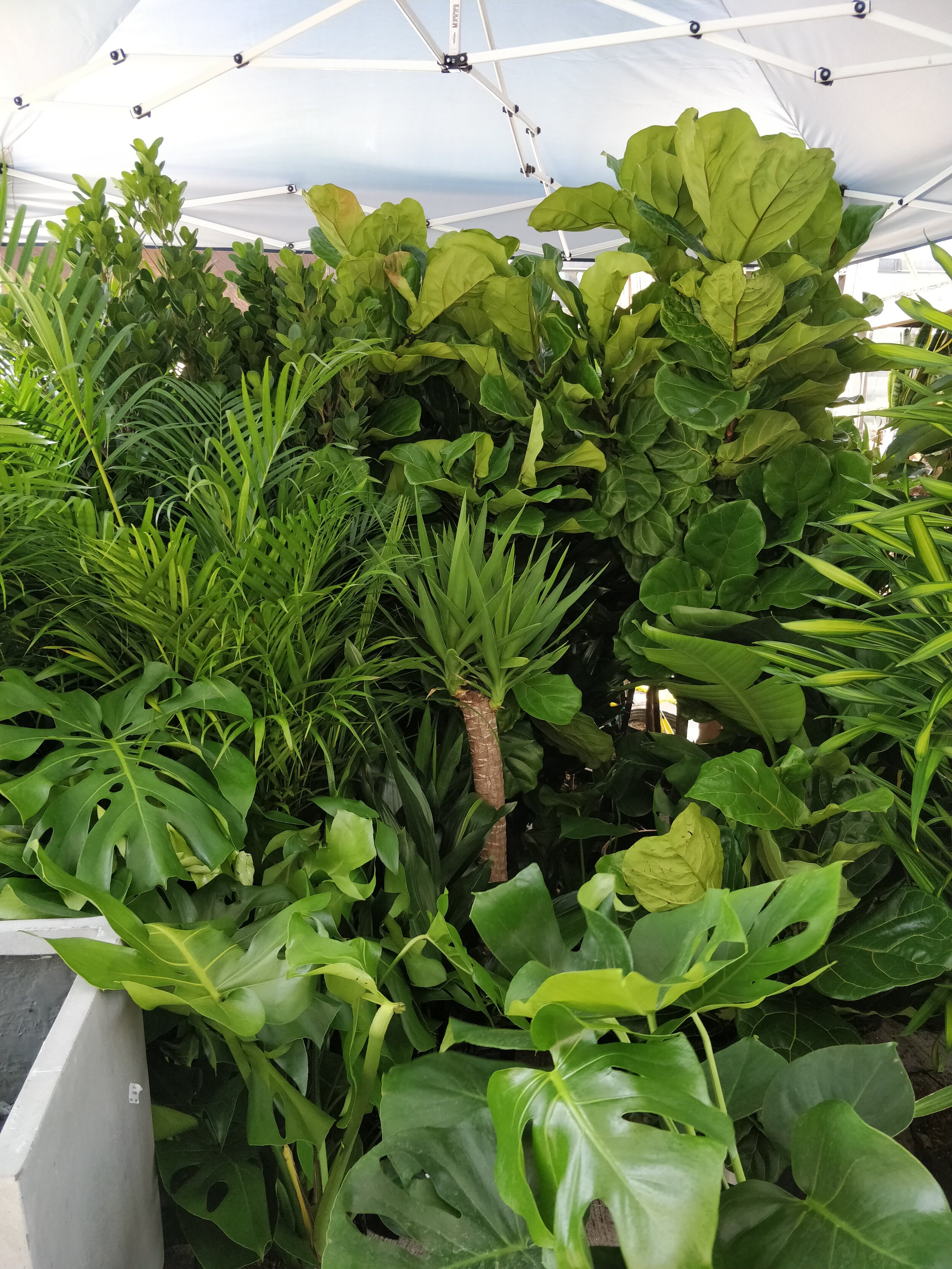
Houseplant Care Guide
Light
Avoid allowing plants to be hit by direct sun whenever possible, especially during the hotter months. A couple hours of early morning or late afternoon sunlight is OK.
All houseplants will do well in bright indirect/filtered sunlight. The level of light (low, medium, bright) is dependent on various factors like cardinal direction (north, south, east, west), outdoor obstructions, blinds, distance from windows, etc. The immediate area around a south, east, or west window would be considered a bright area as long as the houseplant is able to have an unobstructed view of the sky. Medium lit area would be similar to bright area but pulled back from the window. A lower light area would be any north facing windows, obstructed windows, or any areas where it would be difficult to read a book. A bathroom with no windows is not a suitable place for any houseplant, even for the low light plants.
Frequently moving your houseplant to brighter lit areas is not recommended. Houseplants like consistency in their environment and moving them around will cause them to stress out.
Watering
It is better to water less often than more often, but when you do water, water thoroughly, letting the water drain completely out of the bottom of the pot.
Watering routines can vary from plant to plant, environment to environment, season to season. For example, a plant may need to be watered once a week during the spring/summer, but during the winter time, it may need to be watered every 2-3 weeks. Another plant may need to be watered more often if it sits on a windowsill versus sitting far away from the window. Check the moistness of the soil before watering by digging your finger into the first 1-2 inches of soil. Do not let plants sit in water for extended periods of time or root rot can occur. If your plant is not drying out quick enough you might need to move it to a brighter area or use a better draining soil mixture.
TIP 1: For smaller plants, feel how heavy the plant is before and after watering it. If the plant feels significantly lighter, it’s probably time to water it.
TIP 2: Buy a moisture meter to help gauge when it’s time to water. Make sure to test different areas of the soil.
Bugs
Please contact our staff if you have any questions or concerns about any bugs that may be harmful to your houseplants.
Re-potting
Most houseplants can stay in their original nursery pots for 6 months to 1 year before needing to be re-potted. Signs that your plants needs to be re-potted:
Plant needs frequent watering (more than usual)
Lack of soil in the pot
Roots coming out the bottom of the pot
When selecting a new pot, make sure that it’s the next size up (1-3 inches wider/deeper). Potting a plant in a pot that is too big could potentially lead to issues with over watering. Lastly, always use a well draining potting mix.
Pets and Plants
From the ASPCA website: Be advised that the consumption of any plant material may cause vomiting and gastrointestinal upset for dogs and cats. Plants listed as either non-toxic, or potentially toxic with mild GI upset as their symptoms are not expected to be life-threatening to your pets.
If you believe that your animal is ill or may have ingested a poisonous substance, or if you have any further questions regarding the information contained in this database, contact either your local veterinarian or the APCC 24-hour emergency poison hotline at 1-888-426-4435.
Last Updated: 3/6/2021
